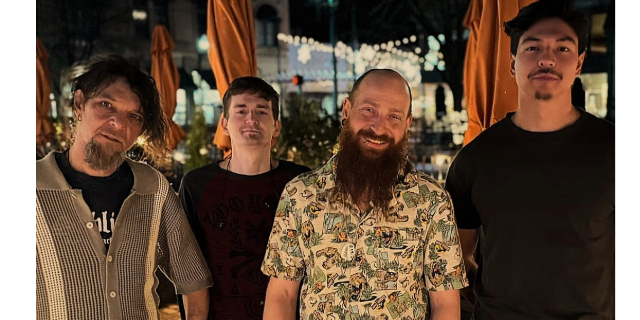Northwest Classics
Published 3:00 am Monday, November 21, 2022

- In 2018, the Baker Heritage Museum devoted an entire display to the 50th anniversary of “Paint Your Wagon.”
Never thought I’d see Old West tough-guy actors Lee Marvin (booze-soaked Ben Rumson) and Clint Eastwood (Sylvester Newel, or Pardner) singing their lungs out in a musical.
But that’s what the cheesy musical comedy “Paint Your Wagon” delivers.
The epic movie, filmed in 1968 mostly in the East Eagle Creek and Anthony Lakes area of Eastern Oregon, runs nearly three hours. I found it on Starz, a premium cable and satellite TV network. If you live in Northeast Oregon, it’s must-see cinema.
The movie starts with a wagon train rolling through typical Eastern Oregon country — sagebrush-clad meadows and pine forests. A wagon accident leads to a death, and while digging the grave along a stream the pioneers find a trove of gold nuggets.
Up pops a gold mining shanty town (constructed over seven months, it caused the movie to go vastly over budget). The town is advertised by the sign, “No-Name City, Population: Male.”
Sigh.
The lonely miners join in singing “They Call the Wind Maria.”
Then two women arrive, accompanied by their polygamist Mormon husband. A stampede ensues to see the women — and hold the baby.
One wife (Elizabeth Woodling played by Jean Seberg) is auctioned to the highest bidder — Marvin. (He is said to have insisted on drinking real alcohol throughout the production and spent most days drunk.) She demands he build her a cabin with a wood-burning fireplace.
When he goes outside and finds a throng of miners waiting for Seberg to make an appearance, Marvin moans, “It looks like I married myself a tourist attraction.”
After Eastwood, Marvin’s mining partner, threatens to leave the pair in domestic tranquility, they insist he stay and become a second husband.
“A humane, practical, beautiful solution,” Seberg says.
The town, however, remains full of “horny gorillas.” Marvin concocts a solution. He proceeds to hijack a stagecoach with several more women on board to provide for the town’s “entertainment.”
When the gold in the stream plays out, many miners begin leaving.
“They’re always digging it up in chunks ‘somewhere else,’ ” one miner says.
Marvin decides, however, that the true motherlode is gold fallen between the floor cracks at the saloon, and starts a team digging tunnels under the town to capture the windfall.
A bull and bear are imported to provide entertainment at the amphitheater (the bear was also brought to Baker City to wrestle local worthies). As the battles go on, the whole town begins to collapse into the tunnels.
Eventually, Marvin decides to leave.
“I don’t care where I go as long as it is 100 miles ahead of civilization,” he says as he drives his mule and wagon down the road to the next gold strike.
He sings the song “Wanderin’ Star,” which rose to number one on the U.K. charts.
Eastwood decides to stay and become a farmer, living a civilized life with Seberg.
The movie was made for $20 million (twice its original budget) and had a box office take of $31.6 million. Even though filming on site was costly, with cast and crew sleeping in tents and often running short on supplies, and stars helicoptered in and out, the backdrops are stunning and offer the film as much authenticity as a Marvin and Eastwood musical can achieve.
Modern Hollywood would never attempt such a project, alas, so Northeastern Oregon should not dream of becoming a regular backdrop for movies.
But for a moment in 1968, we had our place in the spotlight. Seeing Eastwood sing “I Talk to the Trees” is priceless.
In 1968, Hollywood arrived in Baker City when stars Clint Eastwood, Lee Marvin and Jean Seberg moved to town for the filming of “Paint Your Wagon.”
Baker Heritage Museum, which is closed for the season but reopens in the spring, features a scale model of the film’s No Name City.
Today, nothing remains along East Eagle Creek to indicate a major motion picture was produced here, save for a sign commemorating the occasion.





